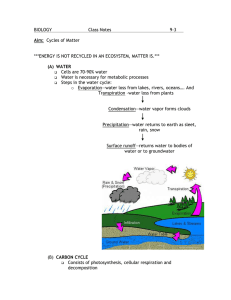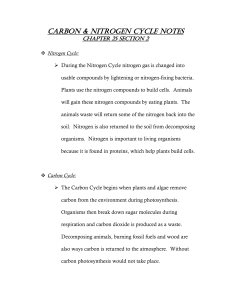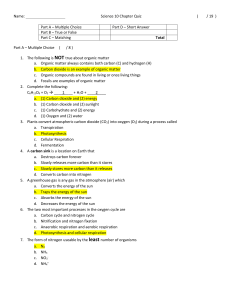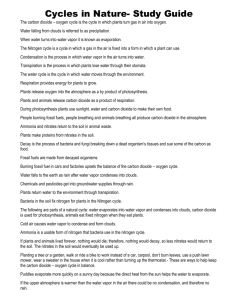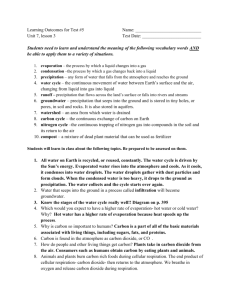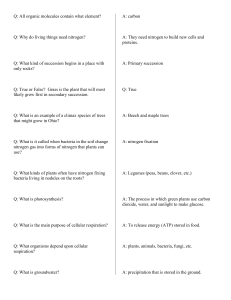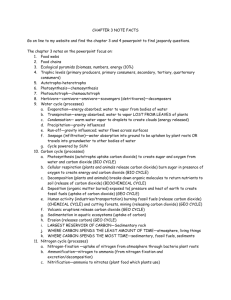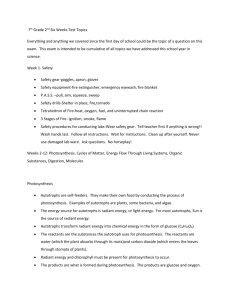Answers to Exit Slip Questions - Ms. Williams - science 10
advertisement
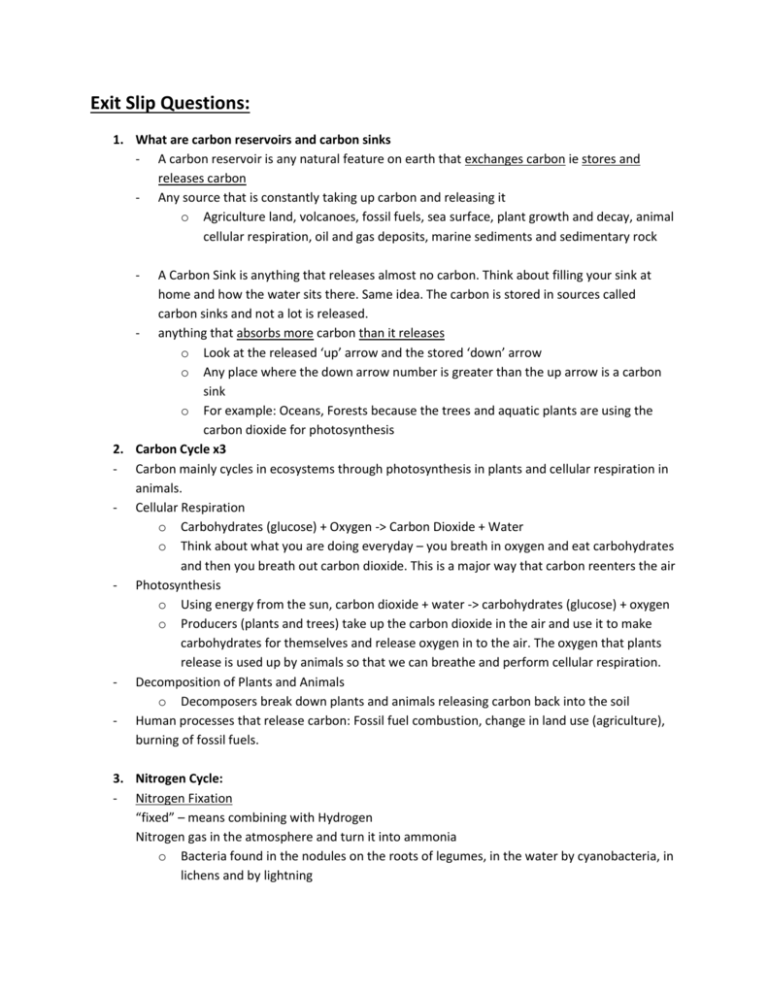
Exit Slip Questions: 1. What are carbon reservoirs and carbon sinks - A carbon reservoir is any natural feature on earth that exchanges carbon ie stores and releases carbon - Any source that is constantly taking up carbon and releasing it o Agriculture land, volcanoes, fossil fuels, sea surface, plant growth and decay, animal cellular respiration, oil and gas deposits, marine sediments and sedimentary rock - A Carbon Sink is anything that releases almost no carbon. Think about filling your sink at home and how the water sits there. Same idea. The carbon is stored in sources called carbon sinks and not a lot is released. - anything that absorbs more carbon than it releases o Look at the released ‘up’ arrow and the stored ‘down’ arrow o Any place where the down arrow number is greater than the up arrow is a carbon sink o For example: Oceans, Forests because the trees and aquatic plants are using the carbon dioxide for photosynthesis 2. Carbon Cycle x3 - Carbon mainly cycles in ecosystems through photosynthesis in plants and cellular respiration in animals. - Cellular Respiration o Carbohydrates (glucose) + Oxygen -> Carbon Dioxide + Water o Think about what you are doing everyday – you breath in oxygen and eat carbohydrates and then you breath out carbon dioxide. This is a major way that carbon reenters the air - Photosynthesis o Using energy from the sun, carbon dioxide + water -> carbohydrates (glucose) + oxygen o Producers (plants and trees) take up the carbon dioxide in the air and use it to make carbohydrates for themselves and release oxygen in to the air. The oxygen that plants release is used up by animals so that we can breathe and perform cellular respiration. - Decomposition of Plants and Animals o Decomposers break down plants and animals releasing carbon back into the soil - Human processes that release carbon: Fossil fuel combustion, change in land use (agriculture), burning of fossil fuels. 3. Nitrogen Cycle: - Nitrogen Fixation “fixed” – means combining with Hydrogen Nitrogen gas in the atmosphere and turn it into ammonia o Bacteria found in the nodules on the roots of legumes, in the water by cyanobacteria, in lichens and by lightning - - Nitrification Ammonium and turn it into nitrates that can be taken up by plants o Bacteria in the soil Denitrification Taken Ammonium and nitrates and turn them back into nitrogen gas found in the atmosphere o Anaerobic Bacteria 4. What does N2 mean? - Atmospheric nitrogen aka nitrogen that you find in the air - Nitrogen molecules cannot stand alone, so Nitrogen always bonds with a second nitrogen molecule in the air. - Two molecules of nitrogen is the reason why the molecule is so strong and doesn’t break easily - To represent this we write N2
